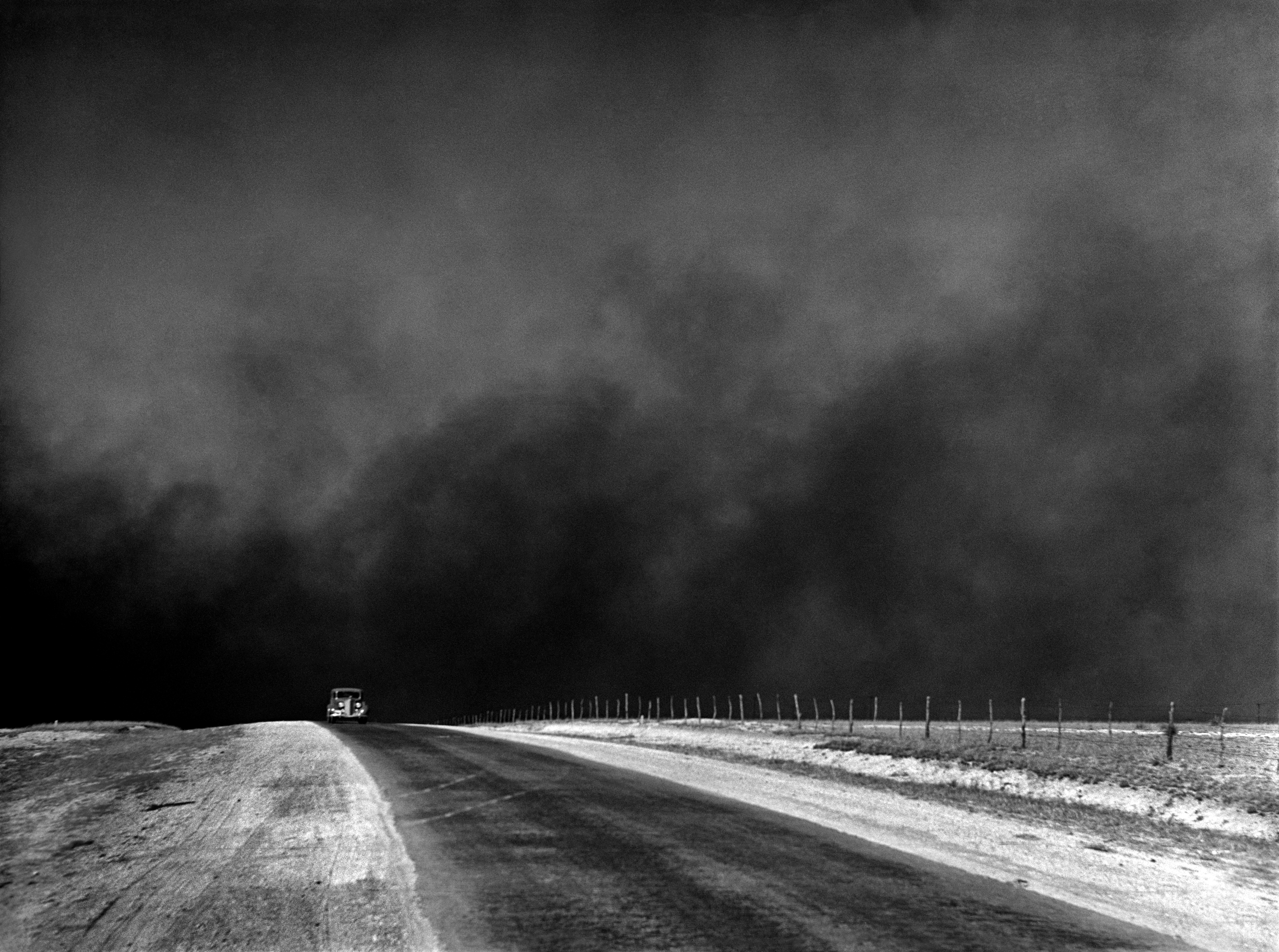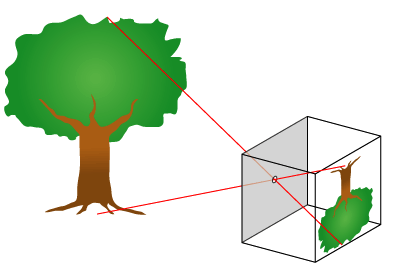|
Exposure Latitude
Exposure latitude is the extent to which a light-sensitive material can be overexposed or underexposed and still achieve an acceptable result. This measure is used for digital and analogue processes, e.g. optical microlithography or photography. Details In the case of optical microlithography this value statistically describes the response of a photoresist to radiation and defines the process window where the photolithographic process can vary within (e.g. how well it compensates for spatial non-uniformities of the illumination). In the case of photography, an artistic case, the measurement of exposure latitude is, by definition dependent on both personal aesthetics and artistic intentions, somewhat subjective. However, the relative differences between media are generally agreed upon: reversal film tends to have very little latitude, while colour negative film has considerably more. Digital sensors vary. It is not to be confused with dynamic range, the range of light intensities a ... [...More Info...] [...Related Items...] OR: [Wikipedia] [Google] [Baidu] |
Photography
Photography is the art, application, and practice of creating durable images by recording light, either electronically by means of an image sensor, or chemically by means of a light-sensitive material such as photographic film. It is employed in many fields of science, manufacturing (e.g., photolithography), and business, as well as its more direct uses for art, film and video production, recreational purposes, hobby, and mass communication. Typically, a lens is used to focus the light reflected or emitted from objects into a real image on the light-sensitive surface inside a camera during a timed exposure. With an electronic image sensor, this produces an electrical charge at each pixel, which is electronically processed and stored in a digital image file for subsequent display or processing. The result with photographic emulsion is an invisible latent image, which is later chemically "developed" into a visible image, either negative or positive, depending on the purp ... [...More Info...] [...Related Items...] OR: [Wikipedia] [Google] [Baidu] |
Photoresist
A photoresist (also known simply as a resist) is a light-sensitive material used in several processes, such as photolithography and photoengraving, to form a patterned coating on a surface. This process is crucial in the electronic industry. The process begins by coating a substrate with a light-sensitive organic material. A patterned mask is then applied to the surface to block light, so that only unmasked regions of the material will be exposed to light. A solvent, called a developer, is then applied to the surface. In the case of a positive photoresist, the photo-sensitive material is degraded by light and the developer will dissolve away the regions that were exposed to light, leaving behind a coating where the mask was placed. In the case of a negative photoresist, the photosensitive material is strengthened (either polymerized or cross-linked) by light, and the developer will dissolve away only the regions that were not exposed to light, leaving behind a coating in areas w ... [...More Info...] [...Related Items...] OR: [Wikipedia] [Google] [Baidu] |
Process Window
The process window is a graph with a range of parameters for a specific manufacturing process that yields a defined result. Typically multiple parameters are plotted in such a graph with a central region where the process behaves well, while the outer borders define regions where the process becomes unstable or returns an unfavourable result. A statistical evaluation of the process performance is further performed by the calculation of the associated Process Window Index. Applications Typical applications are found in photolithography where the response of a photoresist to parameters like temperature, radiation intensity, critical dimension and sidewall angle of the structures, etc. are plotted versus an optical parameter such as the numerical aperture In optics, the numerical aperture (NA) of an optical system is a dimensionless number that characterizes the range of angles over which the system can accept or emit light. By incorporating index of refraction in its definition, NA ... [...More Info...] [...Related Items...] OR: [Wikipedia] [Google] [Baidu] |
Reversal Film
In photography, reversal film or slide film is a type of photographic film that produces a positive image on a transparent base. Instead of negatives and prints, reversal film is processed to produce transparencies or diapositives (abbreviated as "diafilm" or "dia" in some languages like German or Hungarian). Reversal film is produced in various sizes, from 35 mm to roll film to 8×10 inch sheet film. A slide is a specially mounted individual transparency intended for projection onto a screen using a slide projector. This allows the photograph to be viewed by a large audience at once. The most common form is the 35 mm slide, with the image framed in a 2×2 inch cardboard or plastic mount. Some specialized labs produce photographic slides from digital camera images in formats such as JPEG, from computer-generated presentation graphics, and from a wide variety of physical source material such as fingerprints, microscopic sections, paper documents, astronomical imag ... [...More Info...] [...Related Items...] OR: [Wikipedia] [Google] [Baidu] |
Negative Film
In photography, a negative is an image, usually on a strip or sheet of transparent plastic film, in which the lightest areas of the photographed subject appear darkest and the darkest areas appear lightest. This reversed order occurs because the extremely light-sensitive chemicals a camera film must use to capture an image quickly enough for ordinary picture-taking are darkened, rather than bleached, by exposure to light and subsequent photographic processing. In the case of color negatives, the colors are also reversed into their respective complementary colors. Typical color negatives have an overall dull orange tint due to an automatic color-masking feature that ultimately results in improved color reproduction. Negatives are normally used to make positive prints on photographic paper by projecting the negative onto the paper with a photographic enlarger or making a contact print. The paper is also darkened in proportion to its exposure to light, so a second reversal result ... [...More Info...] [...Related Items...] OR: [Wikipedia] [Google] [Baidu] |
Dynamic Range
Dynamic range (abbreviated DR, DNR, or DYR) is the ratio between the largest and smallest values that a certain quantity can assume. It is often used in the context of signals, like sound and light. It is measured either as a ratio or as a base-10 ( decibel) or base-2 (doublings, bits or stops) logarithmic value of the difference between the smallest and largest signal values. Electronically reproduced audio and video is often processed to fit the original material with a wide dynamic range into a narrower recorded dynamic range that can more easily be stored and reproduced; this processing is called dynamic range compression. Human perception The human senses of sight and hearing have a relatively high dynamic range. However, a human cannot perform these feats of perception at both extremes of the scale at the same time. The human eye takes time to adjust to different light levels, and its dynamic range in a given scene is actually quite limited due to optical glare. The ins ... [...More Info...] [...Related Items...] OR: [Wikipedia] [Google] [Baidu] |
Contrast Ratio
The contrast ratio (CR) is a property of a display system, defined as the ratio of the luminance of the brightest shade (white) to that of the darkest shade (black) that the system is capable of producing. A high contrast ratio is a desired aspect of any display. It has similarities with dynamic range. There is no official, standardized way to measure contrast ratio for a system or its parts, nor is there a standard for defining "Contrast Ratio" that is accepted by any standards organization so ratings provided by different manufacturers of display devices are not necessarily comparable to each other due to differences in method of measurement, operation, and unstated variables. Manufacturers have traditionally favored measurement methods that isolate the device from the system, whereas other designers have more often taken the effect of the room into account. An ideal room would absorb all the light reflecting from a projection screen or emitted by a cathode ray tube, and the o ... [...More Info...] [...Related Items...] OR: [Wikipedia] [Google] [Baidu] |
Photographic Techniques
Photography is the art, application, and practice of creating durable images by recording light, either electronically by means of an image sensor, or chemically by means of a light-sensitive material such as photographic film. It is employed in many fields of science, manufacturing (e.g., photolithography), and business, as well as its more direct uses for art, film and video production, recreational purposes, hobby, and mass communication. Typically, a lens is used to focus the light reflected or emitted from objects into a real image on the light-sensitive surface inside a camera during a timed exposure. With an electronic image sensor, this produces an electrical charge at each pixel, which is electronically processed and stored in a digital image file for subsequent display or processing. The result with photographic emulsion is an invisible latent image, which is later chemically "developed" into a visible image, either negative or positive, depending on the purpose ... [...More Info...] [...Related Items...] OR: [Wikipedia] [Google] [Baidu] |
Science Of Photography
The science of photography is the use of chemistry and physics in all aspects of photography. This applies to the camera, its lenses, physical operation of the camera, electronic camera internals, and the process of developing film in order to take and develop pictures properly. Optics Camera obscura The fundamental technology of most photography, whether digital or analog, is the camera obscura effect and its ability to transform of a three dimensional scene into a two dimensional image. At its most basic, a camera obscura consists of a darkened box, with a very small hole in one side, which projects an image from the outside world onto the opposite side. This form is often referred to as a pinhole camera. When aided by a lens, the hole in the camera doesn't have to be tiny to create a sharp and distinct image, and the exposure time can be decreased, which allows cameras to be handheld. Lenses A photographic lens is usually composed of several lens elements, which ... [...More Info...] [...Related Items...] OR: [Wikipedia] [Google] [Baidu] |






